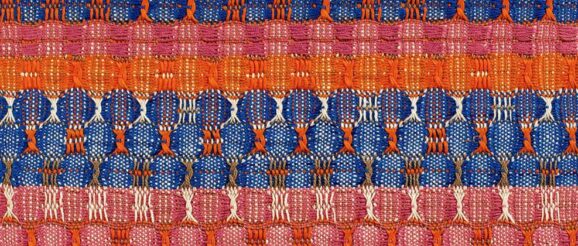A Site for Radical Innovation: The Bauhaus Weaving Workshop

A Site for Radical Innovation: The Bauhaus Weaving Workshop The weaving workshop at the Bauhaus was a hotbed of creative talent, where some of the most significant weavers and textile designers of the entire 20 th century began their careers. Among their prestigious alumni are Anni Albers, Gunta Stolzl, Otti Berger, Marli Ehrman, Benita Otte and Margarete Koehler. Most women who applied to attend the Bauhaus school were pushed into the weaving workshop, to learn what Walter Gropius considered to be ‘women’s work.’ But through sheer grit, determination and a willingness to push boundaries, scores of ambitious women transformed the weaving workshop into not only the Bauhaus’s most commercially successful department, but a place defined by freedom, experimentation and risk-taking. German architect Walter Gropius had ambitious, utopian aims when he first founded a revolutionary new art school in Weimar, Germany. His intention, he claimed, was to open a school that was progressive in every area, that would unite all forms of art and craft under one roof, hence the name Bauhaus, meaning ‘house of architecture.’ In his founding manifesto, he wrote, “Any respectable person will be accepted, regardless of age or gender.” The school, he argued, would offer, “Absolute equality, but also absolutely equal obligations.” Sadly, Gropius was a product of his time, and as the school gained momentum its inherent inequality between men and women became increasingly evident. Gropius exposed his glaring sexism when he noted, “It is not advisable, in our experience, that women work in the heavy craft areas such as carpentry and so forth. For this reason, a women’s section has been formed at the Bauhaus which works particularly with textiles.” Understandably the women who had applied to the Bauhaus with ambitions of becoming an artist had their hopes dashed when they found themselves in what Gropius had deemed the ‘women’s section,’ where they had little choice but to take up weaving. But with limitations also came opportunity – the school’s pluckiest female students were able to weave ideas around modernist abstraction into visually and conceptually rich tapestries that were often monumental in scale. In fact, many historians have argued that it was the textile workshop that most succinctly encapsulated Gropius’s aim for a unity of the arts – through their production of fabrics, textiles, home furnishings and wall hangings in a bold new modernist style that could be incorporated into a range of architectural spaces. The objects they created could also play an important spatial function, absorbing sound or adding soft tactility into otherwise austere, modernist rooms. In its earliest years there was little actual teaching within the weaving school, which led students to experiment freely and learn from one another. From hand-weaving to knotting, embroidery, crochet, macrame and working in improvisatory ways on a loom, the results were surprising, unexpected and fresh. Students introduced thread types that had not made their way into weaving before, such as rayon, lurex and cellophane. The inventive and entrepreneurial student Gunta Solzl remembered in a later interview, “Everything technical, the way the loom worked, the possibilities of intersecting warp and weft, the way threads are fed in, we could only find this out ourselves by trial and error. It caused a lot of head scratching for us poor autodidacts, and many a tear was shed.” Stolzl became head of the weaving school in 1925, when the school moved to better-equipped premises in Dessau, and she was keen to combine the same freedom of experimentation that had defined the school with the integration of structured teaching on colour, form and design. Stolzl pushed for the weaving school to integrate student designs with industrial manufacture, with great commercial success. Within her own practice she demonstrated dazzling experimentations with pattern, texture, movement and energy which would have a remarkable influence on the next generation of weavers. When Meyer took over the Bauhaus as director in 1928, he took a more progressive approach to female students, allowing them to choose their own workshops. He actively encouraged the weaving school to produce fabrics that were both innovative and functional, for covering furniture, glass windows and expanses of wall. Students continued to play with the latest developments in fabric technology, working with iron thread, cellulose and cellophane. When Stolzl was forced to resign for political reasons, the workshop was run briefly by Anni Albers, followed by Otti Berger and Lilly Reich. The Bauhaus’s closure under Nazi pressure led many of the weaving school’s most radical practitioners to emigrate to the United States, including Albers and Ehrman. Albers taught at Black Mountain College for the following 16 years, while Ehrman became a key instructor at the new Bauhaus in Chicago, where she exerted a key influence on the American Fibre Art movement, whose key players included Lenore Tawney, Sheila Hicks and Claire Zeisler. Their pioneering work has allowed the incredible creative innovation of the weaving workshop to live on, and on, proving just how radical and boundary-pushing the act of weaving can be.
